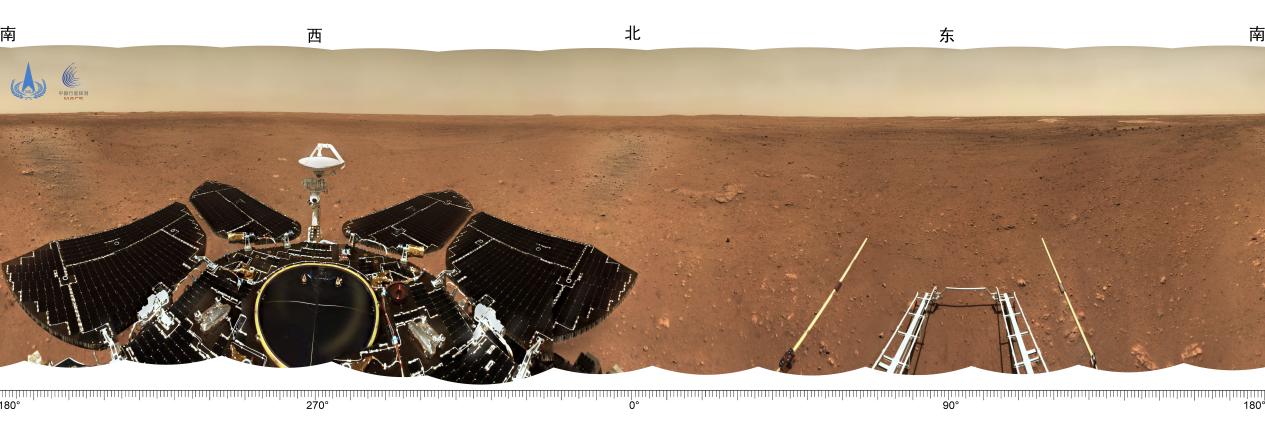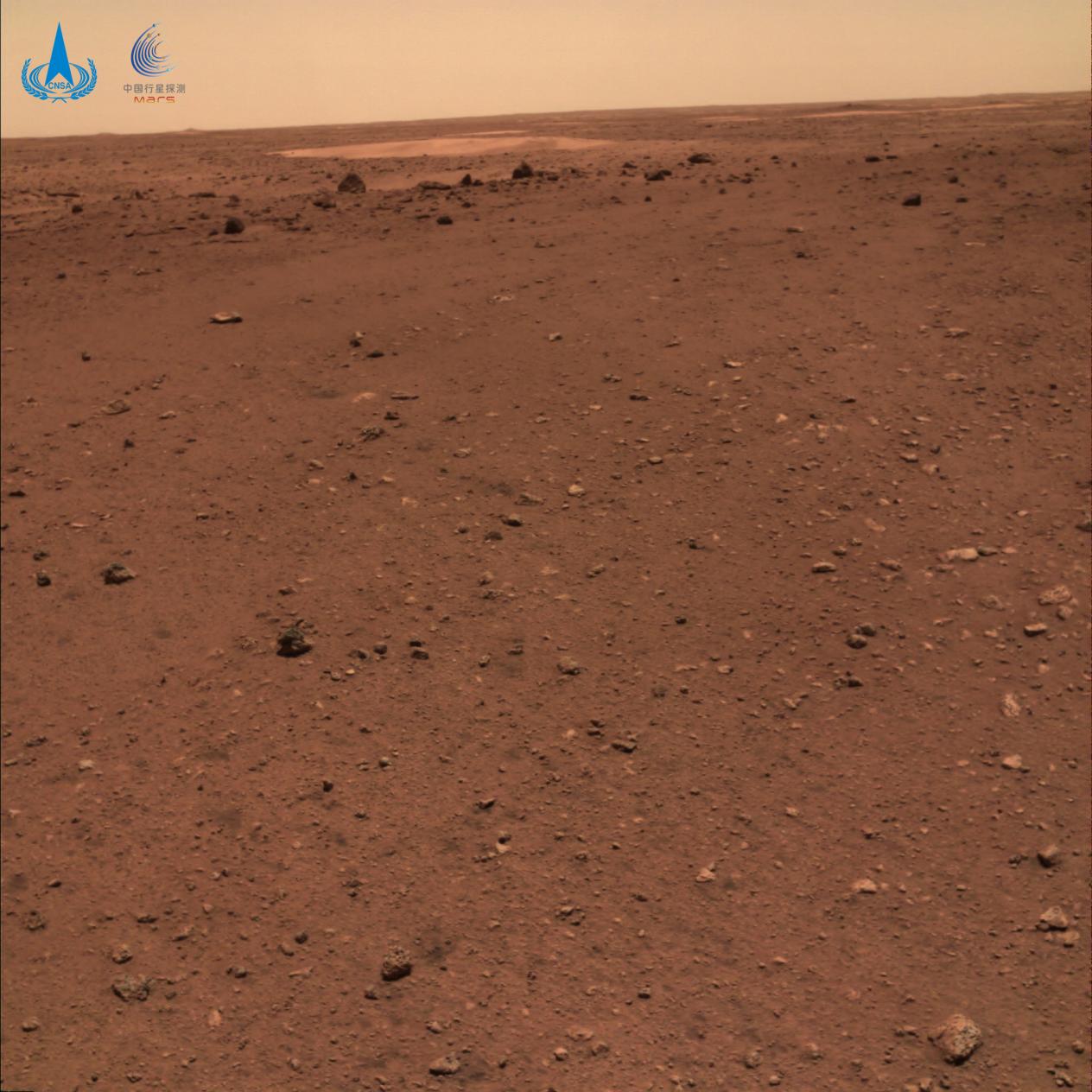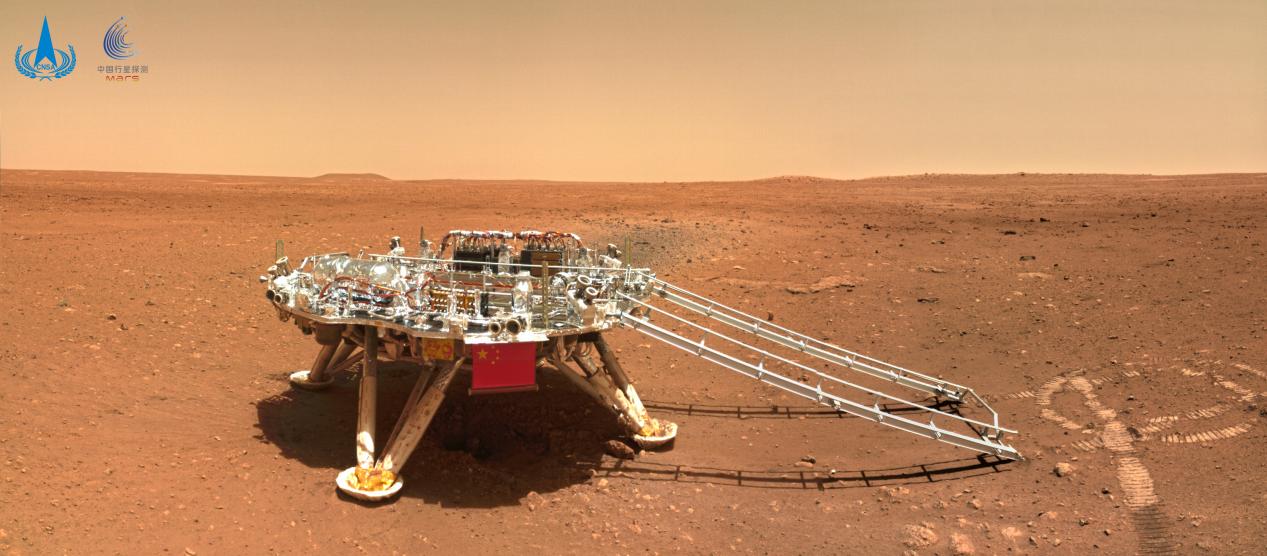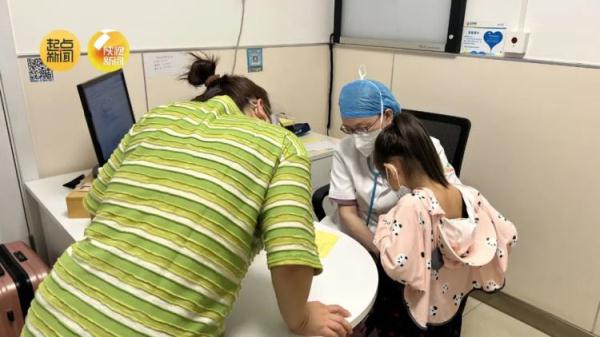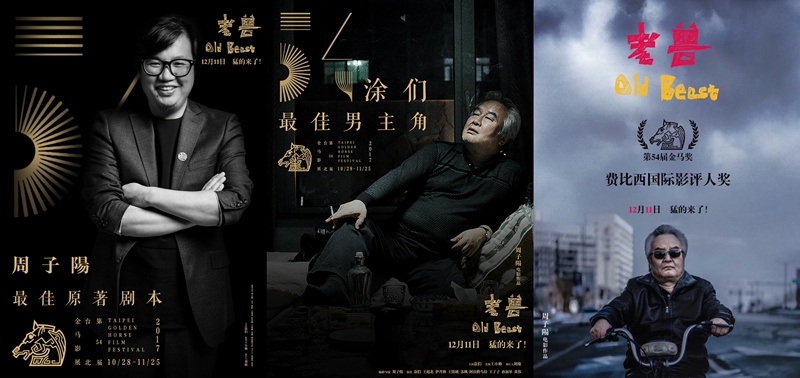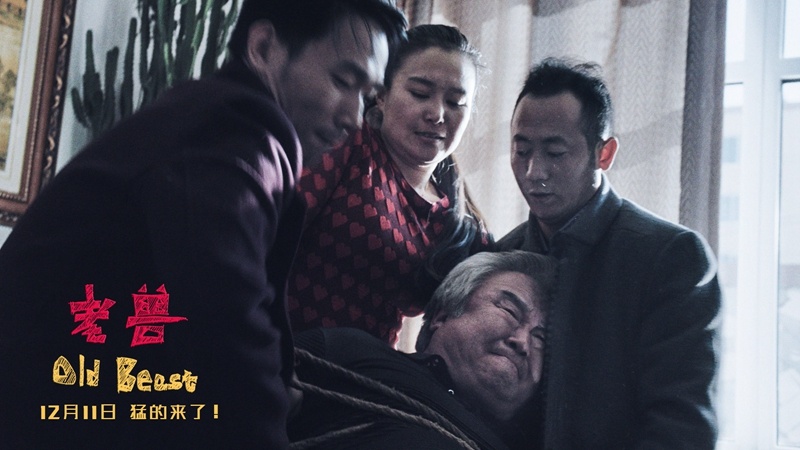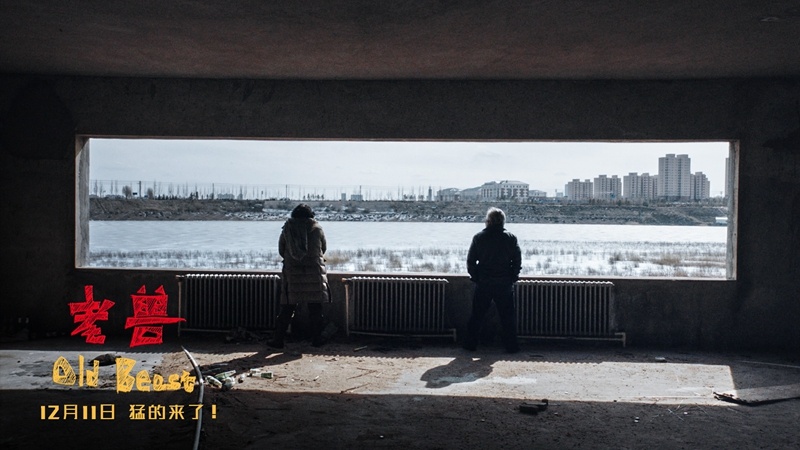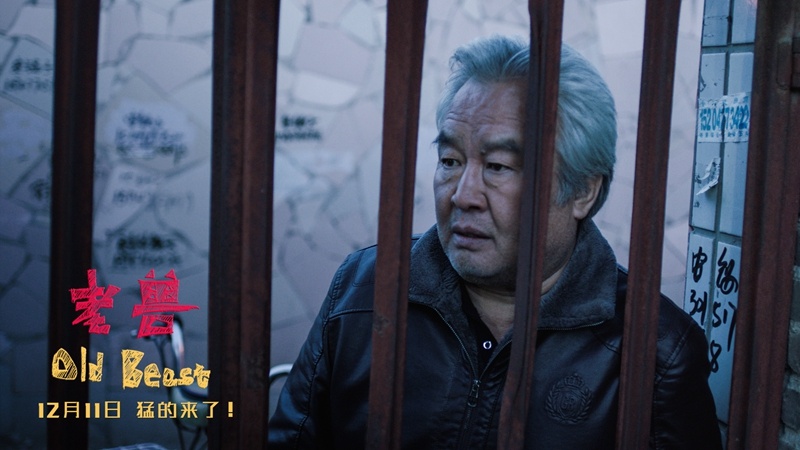Xinhua News Agency, Beijing, February 2 nd
Regulations on coal mine safety production
Chapter I General Provisions
Article 1 These Regulations are formulated for the purpose of strengthening coal mine safety production, preventing and reducing coal mine production safety accidents, and ensuring the safety of people’s lives and property.
Article 2 These Regulations shall apply to the safe production of coal mines in People’s Republic of China (PRC) and other sea areas under the jurisdiction of People’s Republic of China (PRC).
Third coal mine safety production work adhere to the leadership of the Communist Party of China (CPC).
Coal mine safety production work should be people-oriented, adhere to the people first, life first, put the protection of people’s life safety in the first place, implement the concept of safe development, adhere to the policy of safety first, prevention first and comprehensive management, and prevent and resolve major safety risks from the source.
Safety in production in coal mines must be managed by industry, business, production and operation, and the responsibility for safety in production should be strengthened and implemented according to national supervision, local supervision and enterprise responsibility.
Article 4 Coal mining enterprises shall fulfill the main responsibility of safety production, strengthen the management of safety production, establish and implement the responsibility system for safety production for all employees and safety production rules and regulations, increase the investment guarantee for safety production funds, materials, technology and personnel, improve the conditions of safety production, strengthen the standardization and informatization construction of safety production, build a dual prevention mechanism of safety risk classification control and hidden danger investigation and management, improve the risk prevention and resolution mechanism, improve the level of safety production, and ensure safety production.
The main person in charge of a coal mining enterprise (including the actual controller, the same below) is the first person responsible for the safety production of the enterprise, and is fully responsible for the safety production of the enterprise. Other responsible persons are responsible for the work of production safety within the scope of their duties.
Article 5 The people’s governments at or above the county level shall strengthen their leadership over the work of coal mine safety production, establish and improve the work coordination mechanism, support and urge all relevant departments to perform their duties of coal mine safety production according to law, and coordinate and solve major problems in coal mine safety production in a timely manner.
Article 6 The departments of the people’s governments at or above the county level responsible for the supervision and administration of coal mine safety production shall supervise and administer coal mine safety production, and other relevant departments shall perform their duties related to coal mine safety production according to the division of responsibilities.
Article 7 The State practices a coal mine safety supervision system. The national mine safety supervision organization and its local mine safety supervision organization are responsible for coal mine safety supervision, and supervise and inspect the supervision and management of coal mine safety production of local people’s governments according to law.
The national mine safety supervision institutions and their local mine safety supervision institutions shall perform their duties of coal mine safety supervision according to law, and shall not be interfered by any unit or individual.
Article 8 The State practices a system of accountability for coal mine production safety accidents. The units and personnel responsible for coal mine production safety accidents shall be investigated for legal responsibility in accordance with the provisions of these regulations and relevant laws and regulations.
The national mine safety supervision institutions and their local mine safety supervision institutions shall organize or participate in the investigation and handling of coal mine production safety accidents according to law.
Article 9 The departments of the people’s governments at or above the county level responsible for the supervision and administration of coal mine safety production, the national mine safety supervision institutions and their local mine safety supervision institutions shall establish a reporting system, publicly report online reporting platforms such as telephone numbers, mail boxes or e-mail addresses, accept reports on coal mine safety production and deal with them in a timely manner according to law; If it needs to be investigated and handled by other relevant departments, it shall be handed over to other relevant departments for handling.
Any unit or individual shall have the right to report the hidden dangers of accidents or illegal activities in production safety to the departments and institutions specified in the preceding paragraph. If the report is verified, it will be rewarded according to the law.
Article 10 Employees of coal mining enterprises shall have the right to obtain the guarantee of safety in production according to law, and shall perform their obligations in respect of safety in production according to law.
Article 11 The national mine safety supervision institution shall, in accordance with the requirements of ensuring coal mine safety production, and under the guidance of the emergency management department of the State Council, draw up national standards or industrial standards for coal mine safety production in a timely manner according to law, and be responsible for proposing, organizing drafting, soliciting opinions and conducting technical review of the mandatory national standards for coal mine safety production.
Article 12 The State encourages and supports scientific and technological research on coal mine safety production and the popularization and application of advanced technologies and processes for coal mine safety production, so as to improve the level of intelligent mining in coal mines, promote scientific management of coal mine safety production and raise the level of safety production.
Chapter II Responsibility for Safety in Production of Coal Mining Enterprises
Article 13 Coal mining enterprises shall abide by the laws and regulations concerning safety in production and coal mine safety regulations, and implement the national or industrial standards for ensuring safety in production.
Fourteenth new construction, renovation and expansion of coal mine engineering projects (hereinafter referred to as coal mine construction projects) the construction unit shall entrust a design unit with the qualification of construction engineering design enterprises to design safety facilities.
The design of safety facilities shall include prevention and control measures for major disasters such as coal mine water, fire, gas, rockburst, coal dust and roof, which meet the requirements of national standards or industry standards, and shall be submitted to the departments of the people’s governments of provinces, autonomous regions and municipalities directly under the Central Government responsible for the supervision and administration of coal mine safety production for review. If the design of safety facilities needs to make major changes, it shall be reported to the original examination department for re-examination, and shall not be submitted for approval after construction and modified while construction.
Fifteenth coal mine construction project construction units should be unified and coordinated management of the design, construction, supervision and other units involved in coal mine construction projects, and take overall responsibility for the safety management of coal mine construction projects.
The construction unit shall design and construct in accordance with the approved safety facilities, and shall not change the design content without authorization.
Article 16 Before a coal mine construction project is completed and put into production or use, the construction unit shall be responsible for organizing the acceptance of safety facilities and be responsible for the acceptance results; Only after passing the inspection can it be put into production and use.
Seventeenth coal mining enterprises shall obtain a safety production license in accordance with the provisions of the Regulations on Safety Production License. Those who have not obtained the safety production license shall not produce.
Eighteenth the main person in charge of a coal mining enterprise shall have the following responsibilities for the safety production of the enterprise:
(1) Establish, improve and implement the responsibility system for safety production for all employees, and strengthen the standardization of safety production;
(two) to organize the formulation and implementation of safety production rules and regulations and operating procedures;
(three) to organize the formulation and implementation of safety education and training programs;
(four) to ensure the effective implementation of safety production input;
(five) to organize the establishment and implementation of the double prevention mechanism of safety risk classification management and hidden danger investigation and management, supervise and inspect the work of safety in production, and eliminate hidden dangers in time;
(six) to organize the formulation and implementation of emergency rescue plans for production safety accidents;
(seven) timely and truthfully report the coal mine production safety accidents.
Article 19 Coal mining enterprises shall set up safety production management institutions and be equipped with full-time safety production management personnel. Safety production management institutions and safety production management personnel shall have the following safety production responsibilities:
(a) to organize or participate in the formulation of safety production rules and regulations, operating rules, operating rules and emergency rescue plans for production safety accidents;
(two) organize or participate in the education and training of production safety, and truthfully record the education and training of production safety;
(3) Organizing the publicity and education of laws and regulations on production safety;
(4) Organizing safety risk identification and assessment, and urging the implementation of major safety risk control measures;
(five) to stop and correct illegal command, force risky operations, violations of regulations, and have the right to demand that operations in dangerous areas be stopped immediately and operators be evacuated when an emergency threatening safety is discovered;
(six) to check the situation of safe production, timely investigate the hidden dangers of accidents, make statistical analysis on the investigation and management of hidden dangers of accidents, and put forward suggestions for improving the management of safe production;
(7) Organizing or participating in emergency rescue drills;
(eight) to supervise the implementation of safety production rectification measures.
Coal mining enterprises should be equipped with the main technical person in charge, establish and improve the technical management system.
Article 20 Employees of coal mining enterprises shall have the following responsibilities for production safety:
(a) abide by the rules and regulations of coal mine enterprise safety production and operating rules, operating rules, and strictly implement the post safety responsibility;
(two) to participate in the education and training of production safety, to master the knowledge of production safety required by their own work, to improve the skills of production safety, and to enhance the ability of accident prevention and emergency handling;
(three) timely report the hidden dangers of accidents or other unsafe factors found.
Employees of coal mining enterprises have the right to refuse and report to the departments of local people’s governments at or above the county level that are responsible for the supervision and administration of coal mine safety production and the local mine safety supervision institutions.
Coal mining enterprises shall not reduce their wages, welfare and other benefits because employees refuse to command in violation of regulations or force them to take risks, adjust their jobs without justifiable reasons, or terminate their labor contracts.
Twenty-first coal mining enterprises, the main person in charge and safety management personnel should pass the safety production knowledge and management ability assessment, and continue to maintain the corresponding level and ability.
Employees in coal mining enterprises can only work at their posts after passing the education and training on safety production. Special operators in coal mining enterprises shall pass special safety technical training and examination in accordance with relevant state regulations, and obtain corresponding qualifications.
Article 22 Coal mining enterprises shall equip coal mines with full-time mine managers, chief engineers, deputy mine managers in charge of safety, production and electromechanical, and professional and technical personnel.
For coal mines with coal (rock) and gas (carbon dioxide) outburst, high gas, rock burst, easy spontaneous combustion of coal seams, complicated hydrogeological types and extremely complicated coal mines, corresponding special prevention and control institutions should also be established, equipped with full-time deputy chief engineers.
Article 23 Coal mining enterprises shall, in accordance with the relevant provisions of the state, establish and improve the system of leading and leading classes and strictly examine them.
The person in charge of the underground coal mine enterprise and the production, operation and management personnel shall take turns to lead the class to go down the well, and establish the registration file for going down the well.
Twenty-fourth coal mining enterprises should provide employees with labor protection articles that meet the national standards or industry standards, and supervise and educate employees to wear and use them in accordance with the rules of use.
Coal mine underground workers to implement the safety limit system. Coal mining enterprises shall formulate underground working time management system according to law. Underground coal mine jobs shall not use labor dispatch.
Article 25 The design, manufacture, installation, use, testing, maintenance, modification and scrapping of safety equipment used by coal mining enterprises shall conform to national standards or industrial standards.
Coal mining enterprises shall establish safety equipment ledger and traceability management system, conduct regular maintenance, maintenance and regular inspection of safety equipment to ensure normal operation, and record and archive the whole process of safety equipment purchase, warehousing, use, maintenance, inspection, maintenance, transformation and scrapping.
Coal mining enterprises shall not use the equipment and technology that should be eliminated and endanger production safety. The specific catalogue shall be formulated and published by the national mine safety supervision institution.
Article 26 The main production systems, such as coal mining, tunneling, electromechanical, transportation, ventilation, drainage and dumping, and the safety facilities such as gas prevention, coal (rock) and gas (carbon dioxide) outburst prevention, rock burst prevention, fire prevention, water prevention, dust prevention, heat damage prevention, landslide prevention, monitoring and communication in coal mines shall meet the management and technical requirements stipulated by the coal mine safety regulations and national standards or industry standards.
Coal mining enterprises and their relevant personnel shall not shut down or destroy monitoring, alarm, protection and life-saving equipment and facilities directly related to production safety, or tamper with, conceal or destroy their relevant data and information, and shall not affect their normal use in any way.
Article 27 Underground coal mines shall have safety exits, independent ventilation systems, safety monitoring systems, dust-proof water supply systems, fire prevention and extinguishing systems, power supply and distribution systems, personnel transport devices and drawings reflecting the actual situation of coal mines, and shall identify the gas grade, rock burst, spontaneous combustion tendency of coal seams and coal dust explosiveness in accordance with regulations.
Underground coal mines shall select the corresponding permissible explosives and electric detonators according to the mine gas grade, and the blasting work shall be undertaken by full-time blasters.
Twenty-eighth open-pit coal mine stope and dump slope and important buildings and structures should leave enough safety distance.
Coal mining enterprises shall regularly evaluate the slope stability of open-pit coal mines, and the evaluation scope shall cover all slopes of open-pit coal mines. If the requirements of slope stability cannot be met, the mining design should be revised or safety measures should be taken, and the slope monitoring should be strengthened.
Twenty-ninth coal mining enterprises shall formulate emergency rescue plans for production safety accidents according to law, which shall be connected with the emergency rescue plans for production safety accidents formulated by local people’s governments at or above the county level, and organize regular drills.
Coal mining enterprises shall set up full-time rescue teams; Do not have the conditions to set up a full-time ambulance team, should set up a part-time ambulance team, and signed an ambulance agreement with the adjacent full-time ambulance team. When an accident occurs, the full-time rescue team shall arrive at the coal mine to carry out rescue within the specified time.
Thirtieth coal mining enterprises shall carry out production within the mining scope determined according to law, and shall not exceed the layer or cross the border.
Mining operations shall not exploit security pillars without authorization, and shall not adopt dangerous methods such as water breakthrough, blasting and roadway penetration that may endanger the production safety of adjacent coal mines.
Article 31 Coal mining enterprises shall not organize production with super capacity, strength or quota. If the production capacity of a normal production coal mine changes greatly due to changes in geology, production technical conditions, coal mining methods or techniques, its production capacity shall be re-approved according to law.
Local people’s governments at or above the county level and their relevant departments shall not require coal mining enterprises that do not have the conditions for safe production to carry out production.
Article 32 Coal mining enterprises shall implement disaster control according to the degree and types of coal mine disasters, prepare annual disaster prevention and treatment plans, and make timely amendments according to specific conditions.
Thirty-third coal mining in any of the following circumstances, special design should be prepared:
(a) coal (rock) and gas (carbon dioxide) are prominent;
(two) there is a risk of rock burst;
(3) Mining buildings, water bodies and railways that need to be protected, or leaving coal pillars in main shafts and lanes;
(four) the hydrogeological type is complex, extremely complex or there are goaf around the old kiln;
(five) mining easy spontaneous combustion and spontaneous combustion of coal seam;
(six) other special design needs to be prepared.
Article 34 In coal mines, special safety technical measures shall be taken, and special personnel shall be arranged for on-site safety management, when uncovering coal at crosscut, exploring and draining water, connecting tunnels, cleaning coal bunkers, forced caving, sealing and unsealing fire areas, and hot work, as well as other dangerous operations stipulated by the national mine safety supervision institutions.
Article 35 Coal mining enterprises shall establish a safety risk classification control system, carry out safety risk identification and evaluation, and take corresponding control measures according to the safety risk classification.
Coal mining enterprises should establish and improve the system of investigation and management of hidden dangers of accidents, and take technical and management measures to find and eliminate hidden dangers of accidents in time. The investigation and management of hidden dangers of accidents shall be truthfully recorded, and the employees shall be informed regularly. After being signed by the person in charge of the coal mining enterprise, the written report on the investigation and management of major accidents shall be submitted quarterly to the departments of the local people’s governments at or above the county level responsible for the supervision and administration of coal mine safety production and the local mine safety supervision institutions.
Coal mining enterprises should strengthen the safety management of their coal mines and conduct regular safety inspections of their coal mines.
Thirty-sixth coal mining enterprises in any of the following circumstances, which are major accidents, should immediately stop production and construction in the affected areas, and promptly eliminate the hidden dangers of accidents:
(a) super-capacity, super-strength or super-quota organization of production;
(two) the gas exceeds the limit;
(three) coal (rock) and gas (carbon dioxide) outburst mines failed to implement outburst prevention measures in accordance with the provisions;
(four) coal (rock) and gas (carbon dioxide) outburst mines, high gas mines are not established in accordance with the provisions of the gas extraction system, or the system can not operate normally;
(five) the ventilation system is not perfect and reliable;
(six) super layer, cross-border mining;
(seven) there was a serious flood and no effective measures were taken;
(eight) there is a danger of rock burst, and no effective measures have been taken;
(nine) serious spontaneous combustion, did not take effective measures;
(ten) the use of equipment and technology that should be eliminated and endanger production safety;
(eleven) the monitoring and communication system is not established in accordance with the provisions, or the system can not operate normally;
(twelve) the slope angle of open-pit coal mine is greater than the design maximum or the slope is seriously deformed, and no effective measures are taken;
(thirteen) failing to adopt the dual-loop power supply system in accordance with the provisions;
(fourteen) the production of new coal mines while building, during the reconstruction and expansion of coal mines, production in the reconstruction and expansion area, or production in other areas beyond the scope and scale specified in the design;
(15) engaging in production without re-obtaining or timely changing the safety production license after the implementation of the overall contract production and operation, or the contractor subcontracts again, and outsources the maintenance work of underground mining face and roadway;
(sixteen) during the period of restructuring, merger and division, the person in charge of production safety and the safety production management organization were not clearly defined, or after the completion of restructuring, merger and division, the safety production license was not re-acquired or changed in time;
(seventeen) there are other major accidents.
Article 37 Coal mining enterprises and their relevant personnel shall cooperate with the departments of the people’s governments at or above the county level responsible for the supervision and administration of coal mine safety production, the national mine safety supervision institutions and their local mine safety supervision institutions in performing their duties according to law, and shall truthfully provide relevant information as required, and shall not conceal, refuse or obstruct them.
Coal mining enterprises shall immediately rectify the hidden dangers of accidents investigated and dealt with by the departments of the people’s governments at or above the county level responsible for the supervision and administration of coal mine safety production, the national mine safety supervision institutions and the local mine safety supervision institutions, and report the rectification results as required.
Thirty-eighth coal mining enterprises should arrange safety production expenses and other funds in time and in full to ensure that they meet the requirements of safety production. The decision-making bodies and principal responsible persons of coal mining enterprises shall be responsible for the consequences caused by insufficient capital investment necessary for safe production.
Chapter III Supervision and Administration of Coal Mine Safety Production
Thirty-ninth coal mine safety production shall implement the responsibility system for safety production of local party and government leading cadres and strengthen the territorial management of coal mine safety production.
Article 40 The people’s governments of provinces, autonomous regions and municipalities directly under the Central Government shall, in accordance with the principle of classified supervision, define the main body of safety production supervision of coal mining enterprises.
The relevant competent departments of the people’s governments at or above the county level shall investigate and deal with those who engage in coal mine production without obtaining a safety production license according to law.
The Township People’s Government shall take effective measures to stop coal mine production without obtaining a safety production license according to law within its jurisdiction, and report to the relevant competent departments of the people’s government at the county level.
Article 41 The departments of the people’s governments of provinces, autonomous regions and municipalities directly under the Central Government responsible for the supervision and administration of coal mine safety production shall review the design of safety facilities for coal mine construction projects, complete the review within 30 days from the date of acceptance, sign the opinions of approval or disapproval, and give a written reply.
The departments of the people’s governments of provinces, autonomous regions and municipalities directly under the Central Government responsible for the supervision and administration of coal mine safety production shall strengthen the supervision and verification of the acceptance activities and results of the safety facilities of the construction units.
Article 42 The departments of the people’s governments of provinces, autonomous regions and municipalities directly under the Central Government responsible for the supervision and administration of coal mine safety production are responsible for the issuance and administration of safety production licenses for coal mining enterprises, and accept the supervision of the state mine safety supervision institutions and their local mine safety supervision institutions.
Forty-third departments of local people’s governments at or above the county level responsible for the supervision and administration of coal mine safety production shall prepare annual supervision and inspection plans for coal mine safety production and conduct supervision and inspection according to the plans.
The annual supervision and inspection plan for coal mine safety production shall be copied to the local mine safety supervision institution.
Article 44 The departments of local people’s governments at or above the county level responsible for the supervision and administration of coal mine safety production shall supervise and inspect coal mine enterprises according to law, and take the safety production situation at the coal mine site as the key content of supervision and inspection. Supervision and inspection can take the following measures:
(a) to enter the coal mining enterprises for inspection, focusing on the first-line production and workplace inspection, access to relevant information, to the relevant units and personnel to understand the situation;
(two) the illegal acts of production safety found in the inspection shall be corrected on the spot or required to be corrected within a time limit;
(three) the hidden dangers of accidents found in the inspection shall be ordered to be eliminated immediately; If the safety cannot be guaranteed before or during the elimination of major accident hazards, it shall be ordered to evacuate the workers from the dangerous area, and be ordered to temporarily stop production or stop using related facilities and equipment;
(4) To seal up or detain facilities, equipment and equipment that are deemed not to meet the national or industrial standards for ensuring safe production.
Supervision and inspection shall not affect the normal production and business activities of coal mining enterprises.
Article 45 The departments of the local people’s governments at or above the county level responsible for the supervision and administration of coal mine safety production shall incorporate the hidden dangers of major accidents into the relevant information systems, establish and improve the management and supervision system of hidden dangers of major accidents, and urge coal mining enterprises to eliminate hidden dangers of major accidents.
Forty-sixth departments of local people’s governments at or above the county level responsible for the supervision and administration of coal mine safety production shall strengthen the supervision of technical service institutions for coal mine safety production.
Coal mine safety production technical service institutions that undertake the responsibilities of safety evaluation, certification, testing and inspection shall carry out safety production technical service activities in accordance with the provisions of relevant laws and regulations and national standards or industry standards, and be responsible for the reports issued, and shall not lease qualifications, link up or issue false reports.
Article 47 People’s governments at or above the county level and their relevant departments shall punish coal mining enterprises, coal mine safety production technical service institutions and relevant employees for dishonesty in production safety according to laws and regulations.
Article 48 For coal mining enterprises ordered to suspend production for rectification, the relevant local people’s governments shall take effective measures to carry out supervision and inspection during the period of suspension of production for rectification.
If a coal mining enterprise is ordered to suspend production for rectification due to illegal activities in production safety or major accidents, it shall formulate a rectification plan and carry out rectification. Where it is required to resume production after the rectification, the local people’s government at or above the county level, which is responsible for the supervision and administration of coal mine safety production, shall organize the acceptance and complete the acceptance within 20 days from the date of receiving the application for resuming production. Those who pass the acceptance inspection shall be signed by the principal responsible person of the department, approved by the local mine safety supervision institution and reported to the principal responsible person of the people’s government at the corresponding level for approval before resuming production.
Forty-ninth departments of local people’s governments at or above the county level responsible for the supervision and administration of coal mine safety production shall announce to the public the coal mining enterprises ordered to suspend production for rectification or closure within five working days; If a coal mining enterprise ordered to suspend production for rectification resumes production after acceptance, it shall make an announcement to the public within 5 working days from the date of resuming production.
Chapter IV Coal Mine Safety Supervision
Article 50 The national mine safety supervision institutions and their local mine safety supervision institutions shall perform their duties of coal mine safety supervision according to law, strengthen supervision and inspection over the supervision and management of coal mine safety production of local people’s governments at or above the county level, inform the relevant local people’s governments of the supervision and inspection in a timely manner, put forward supervision opinions and suggestions on improving and strengthening coal mine safety production, and urge the rectification and review of major accidents.
The local people’s governments at or above the county level shall cooperate with and accept the supervision and inspection of the national mine safety supervision institutions and their local mine safety supervision institutions, and timely implement the supervision opinions and suggestions.
Fifty-first local mine safety supervision institutions shall supervise the safety production of coal mines within their jurisdiction; In accident-prone areas, key supervision should be implemented. The national mine safety supervision institution shall, according to the actual situation, organize comprehensive supervision or key supervision of coal mine safety production throughout the country.
Fifty-second national mine safety supervision institutions and their local mine safety supervision institutions can supervise and inspect the supervision and management of coal mine safety production of local people’s governments at or above the county level in the following ways:
(a) to listen to the work reports of the relevant local people’s governments and their departments responsible for the supervision and administration of coal mine safety production;
(two) access, copy and coal mine safety production related documents, files, work records and other information;
(three) to require the relevant local people’s governments and their departments and relevant personnel responsible for the supervision and administration of coal mine safety production to explain the relevant issues concerning coal mine safety production;
(four) it is necessary to take other ways.
Article 53 The state mine safety supervision institutions and their local mine safety supervision institutions shall perform their duties of coal mine safety supervision, and have the right to enter the coal mine workplaces for inspection, attend the safety production meetings of coal mine enterprises, and get information from relevant coal mine enterprises and personnel.
The national mine safety supervision organization and its local mine safety supervision organization have the right to require immediate elimination or elimination within a time limit if they find hidden dangers of accidents at the coal mine site; If it is found that there is illegal command, forced risky operation, illegal operation and other illegal activities in production safety, it has the right to immediately correct or demand immediate stop of operation; In case of an emergency that threatens safety, have the right to demand that the operation in the dangerous area be stopped immediately and the operators be evacuated.
Mine safety supervisors shall show their law enforcement certificates when performing their duties of coal mine safety supervision.
Article 54 If the national mine safety supervision organization and its local mine safety supervision organization find that there are major hidden dangers in coal mining enterprises and order them to stop production for rectification, they shall promptly transfer them to the departments of the local people’s governments at or above the county level responsible for the supervision and administration of coal mine safety production for handling and supervision.
Article 55 If the state mine safety supervision organization and its local mine safety supervision organization find that there are illegal acts in coal mining enterprises that should be handled by other departments, they shall promptly transfer them to the relevant departments for handling.
Fifty-sixth national mine safety supervision institutions and their local mine safety supervision institutions and relevant departments of the people’s governments at or above the county level shall establish information sharing and case transfer mechanisms, and strengthen cooperation and cooperation.
Fifty-seventh national mine safety supervision institutions and their local mine safety supervision institutions shall strengthen the informatization construction of coal mine safety production and improve the level of law enforcement by means of informatization.
Coal mining enterprises shall network and upload electronic data in real time according to the safety production electronic data specification formulated by the national mine safety supervision institution, and be responsible for the authenticity, accuracy and completeness of the uploaded electronic data.
Article 58 The state mine safety supervision institutions and their local mine safety supervision institutions shall supervise and inspect the implementation of laws and regulations on safety in production, coal mine safety regulations and national or industrial standards for ensuring safety in production by coal mining enterprises according to law, and exercise their functions and powers as stipulated in Article 44 of these Regulations.
Article 59 After a coal mine production safety accident occurs, the coal mining enterprise and its responsible person shall promptly take effective measures to organize rescue, and immediately and truthfully report to the local emergency management department, the department responsible for the supervision and administration of coal mine production safety and the local mine safety supervision institution in accordance with the Regulations on the Reporting, Investigation and Handling of Production Safety Accidents.
The national mine safety supervision institution and its local mine safety supervision institution shall, according to the accident level and work needs, send a working group to the scene of the accident to guide and cooperate with the local people’s government where the accident occurred to carry out emergency rescue work.
Sixtieth coal mine production safety accidents shall be investigated and dealt with according to the accident level.
Particularly serious accidents shall be investigated and handled by the relevant departments authorized by the State Council or the State Council in accordance with the Regulations on Reporting, Investigation and Handling of Production Safety Accidents. Major accidents, major accidents and general accidents shall be investigated and handled by the national mine safety supervision institutions and their local mine safety supervision institutions in accordance with the provisions of the Regulations on Reporting, Investigation and Handling of Production Safety Accidents.
Chapter V Legal Liability
Article 61 Whoever engages in coal mine production without obtaining a safety production license according to law shall be ordered to stop production immediately, and the illegal income and mined coal and mining equipment shall be confiscated; If the illegal income is more than 100,000 yuan, a fine of more than 2 times and less than 5 times of the illegal income shall be imposed; If there is no illegal income or the illegal income is less than 100,000 yuan, a fine of not less than 100,000 yuan but not more than 200,000 yuan shall be imposed.
If a closed coal mining enterprise resumes production without authorization, it shall be punished in accordance with the provisions of the preceding paragraph.
Sixty-second coal mining enterprises have one of the following acts, shall be punished in accordance with the relevant provisions of the "People’s Republic of China (PRC) production safety law":
(1) Failing to set up a safety production management organization and provide safety production management personnel in accordance with regulations;
(two) the main person in charge and the safety production management personnel have failed to pass the examination in accordance with the provisions and continue to maintain the corresponding level and ability;
(3) Failing to conduct safety education and training in accordance with regulations, failing to truthfully inform relevant safety matters in accordance with regulations, or failing to truthfully record the safety education and training;
(four) special operations personnel have not received special safety training and obtained corresponding qualifications in accordance with the regulations, and they have been working at their posts;
(five) dangerous operations, without taking special safety technical measures and arranging special personnel for on-site safety management;
(6) Failing to establish and implement the safety risk classification control system and the accident hidden danger investigation and management system in accordance with the provisions, or failing to report the investigation and management of major accident hidden dangers in accordance with the provisions;
(seven) failing to formulate an emergency rescue plan for production safety accidents in accordance with the regulations or organizing drills on a regular basis.
Sixty-third coal mining enterprises have one of the following acts, shall be ordered to make corrections within a time limit, and be fined between 100 thousand yuan and 200 thousand yuan; If no correction is made within the time limit, it shall be ordered to suspend production for rectification, and a fine of not less than 200,000 yuan but not more than 500,000 yuan shall be imposed, and the directly responsible person in charge and other directly responsible personnel shall be fined not less than 30,000 yuan but not more than 50,000 yuan:
(1) Failing to formulate and implement safety production rules and regulations such as the responsibility system for safety production of all employees and the leadership shift;
(2) failing to equip coal mines with mine managers and other personnel and institutions in accordance with regulations, or failing to set up rescue teams in accordance with regulations;
(three) the main production system and safety facilities of coal mines do not meet the requirements of coal mine safety regulations and national standards or industry standards;
(four) the special design is not prepared in accordance with the provisions;
(five) the underground coal mine failed to identify the gas grade, rock burst, spontaneous combustion tendency of coal seam and coal dust explosion in accordance with the regulations;
(six) the safety distance between the stope and dump slope of open-pit coal mine and important buildings and structures is not in conformity with the provisions, or the slope of open-pit coal mine is not kept stable in accordance with the provisions;
(seven) illegal command or force risky operations, in violation of regulations.
Article 64 Coal mining enterprises that are still producing with major accidents shall be ordered to stop production for rectification, and the specific requirements such as the content and time of rectification shall be specified, and a fine of not less than 500,000 yuan but not more than 2 million yuan shall be imposed; The main person in charge of a coal mining enterprise shall be fined between 30,000 yuan and 150,000 yuan.
Article 65 Coal mining enterprises that mine beyond the legally determined mining scope shall be dealt with in accordance with the provisions of relevant laws and regulations.
Unauthorized mining of security pillars or the use of dangerous methods that may endanger the production safety of adjacent coal mines, such as water bursting, blasting, and roadway penetration, shall be ordered to immediately stop operations and confiscate illegal income; If the illegal income is more than 100,000 yuan, a fine of more than 2 times and less than 5 times of the illegal income shall be imposed; If there is no illegal income or the illegal income is less than 100,000 yuan, a fine of 100,000 yuan to 200,000 yuan shall be imposed; If losses are caused, they shall be liable for compensation according to law.
Sixty-sixth coal mining enterprises have one of the following acts, shall be ordered to make corrections; Refuses to correct, at more than 100 thousand yuan to 200 thousand yuan fine; The person in charge who is directly responsible and other directly responsible personnel shall be fined between 10,000 yuan and 20,000 yuan:
(a) in violation of the provisions of the first paragraph of article thirty-seventh, concealing the hidden dangers of accidents and other safety issues;
(two) in violation of the provisions of the first paragraph of Article 44 of these regulations, unsealing or using the facilities, equipment and equipment that have been sealed up or detained without authorization;
(three) there are other acts of refusing or obstructing supervision and inspection.
Article 67 In the event of a coal mine production safety accident, the responsible coal mine enterprise shall be fined in accordance with the following provisions, in addition to requiring it to bear corresponding responsibilities such as compensation according to law:
(a) a general accident, a fine of 500 thousand yuan and 1 million yuan;
(two) a major accident, a fine of 1.5 million yuan and 2 million yuan;
(three) a major accident, a fine of 5 million yuan and 10 million yuan;
(four) in the event of a particularly serious accident, a fine of more than 10 million yuan and less than 20 million yuan shall be imposed.
In the event of a coal mine production safety accident, if the circumstances are particularly serious and the impact is particularly bad, a fine may be imposed on the responsible coal mining enterprise in accordance with the amount of the fine mentioned in the preceding paragraph, which is more than 2 times but less than 5 times.
Article 68 If the decision-making bodies, principal responsible persons, other responsible persons and safety production management personnel of coal mining enterprises fail to perform their duties of safety production management according to law, they shall be punished in accordance with the relevant provisions of the Safety Production Law of People’s Republic of China (PRC) and bear corresponding responsibilities.
The main person in charge of a coal mine enterprise fails to perform the duties of safety production management according to law, resulting in a coal mine production safety accident, and shall be fined in accordance with the following provisions:
(a) in the event of a general accident, a fine of 40% of the annual income of the previous year shall be imposed;
(two) in the event of a major accident, a fine of 60% of the annual income of the previous year;
(three) in the event of a major accident, a fine of 80% of the annual income of the previous year;
(four) in the event of a particularly serious accident, a fine of 100% of the annual income of the previous year shall be imposed.
Article 69 Coal mining enterprises and their relevant personnel who have concealed or lied about accidents shall be punished in accordance with the relevant provisions of the Law of People’s Republic of China (PRC) on Safety in Production and the Regulations on Reporting, Investigation and Handling of Production Safety Accidents.
Relevant local people’s governments and their emergency management departments, departments responsible for coal mine safety production supervision and management, and local mine safety supervision institutions have concealed or lied about accidents, and the responsible leaders and directly responsible personnel shall be punished according to law.
Article 70 In any of the following circumstances, a coal mining enterprise shall be submitted to the local people’s government at or above the county level for closure:
(a) unauthorized production without obtaining a safety production license according to law;
(two) 2 or more times within 3 months found that there are major accidents still in production;
(3) It is difficult to effectively prevent and control major disasters under the existing technical conditions as demonstrated by experts organized by local people’s governments;
(four) there are other circumstances stipulated in the "People’s Republic of China (PRC) production safety law" that should be submitted for closure.
The relevant local people’s government shall immediately organize the implementation of the decision to close it down. The closure of coal mines shall meet the following requirements:
(a) in accordance with the relevant provisions of laws and regulations to revoke or cancel the relevant licenses;
(2) Stop supplying and properly handle explosives for civilian use;
(three) to stop power supply and dismantle mine production equipment, power supply and communication lines;
(four) closed, filled mine shaft, flat wellhead site, restore the landform;
(5) Properly handle labor relations, pay economic compensation and work-related injury insurance benefits according to laws and regulations, organize occupational health examination when leaving work, repay unpaid wages, and pay back unpaid social insurance premiums;
(six) the establishment of signs;
(seven) submit and hand over relevant reports, drawings and materials, etc.;
(eight) other requirements stipulated by relevant laws and regulations.
Seventy-first any of the following circumstances, shall be punished in accordance with the relevant provisions of the "People’s Republic of China (PRC) production safety law":
(a) the coal mine construction project has no design of safety facilities or the design of safety facilities has not been reported to the relevant departments for examination and approval in accordance with the provisions;
(two) the construction unit of the coal mine construction project fails to design and construct the safety facilities approved;
(three) before the coal mine construction project is completed and put into production or use, the safety facilities have not passed the acceptance;
(four) coal mining enterprises in violation of the provisions of the first paragraph of article twenty-fourth, the first and second paragraphs of article twenty-fifth and the second paragraph of article twenty-sixth.
Article 72 If a technical service institution for coal mine safety production, which is responsible for safety evaluation, certification, testing and inspection, issues false reports, leases qualifications, links, issues false reports, etc., the institution and the directly responsible person in charge and other directly responsible personnel shall be punished and investigated for corresponding responsibilities in accordance with the relevant provisions of the People’s Republic of China (PRC) Safety Production Law. The main person in charge is responsible for major and especially serious coal mine production safety accidents, and shall not engage in technical services related to coal mine safety production for life.
Article 73 The administrative punishment stipulated in these Regulations shall be decided by the departments of the people’s governments at or above the county level responsible for the supervision and administration of coal mine safety production and other relevant departments, the national mine safety supervision institutions and their local mine safety supervision institutions in accordance with the division of responsibilities, and the same illegal act shall not be given an administrative punishment of more than two fines. Coal mining enterprises ordered to suspend production for rectification shall temporarily suspend their safety production licenses, etc. Serious violations of these regulations shall be severely punished according to law.
Article 74 Where the local people’s governments at all levels, the departments of the people’s governments at or above the county level responsible for the supervision and administration of coal mine safety production and other relevant departments, the national mine safety supervision institutions and their local mine safety supervision institutions are under any of the following circumstances, the responsible leaders and the persons directly responsible shall be punished according to law:
(a) the departments of the people’s governments at or above the county level responsible for the supervision and administration of coal mine safety production, the national mine safety supervision institutions and their local mine safety supervision institutions do not perform their duties according to law, and do not promptly investigate and deal with major hidden dangers of accidents and illegal acts in production safety within their jurisdiction; Other relevant departments of the people’s governments at or above the county level fail to perform their duties related to coal mine safety production according to law;
(two) the Township People’s Government found that coal production was carried out without obtaining a safety production license according to law in the area under its jurisdiction, and did not take effective measures to stop it or report it to the relevant competent departments of the people’s government at the county level;
(3) Coal mining enterprises ordered to suspend production for rectification continue to produce during the period of suspension of production for rectification due to ineffective supervision and inspection by relevant local people’s governments;
(four) the closure of coal mines did not meet the requirements of the second paragraph of article seventieth of this Ordinance;
(five) the departments of the people’s governments at or above the county level responsible for the supervision and administration of coal mine safety production, the national mine safety supervision institutions and their local mine safety supervision institutions fail to deal with the report in time after receiving it;
(six) the local people’s governments at or above the county level and their relevant departments require coal mining enterprises that do not have the conditions for safe production to carry out production;
(seven) there are other cases of abuse of power, dereliction of duty, favoritism.
Article 75 Whoever violates the provisions of these Regulations and constitutes a crime shall be investigated for criminal responsibility according to law.
Chapter VI Supplementary Provisions
Article 76 These Regulations shall come into force as of May 1, 2024. "Regulations on Coal Mine Safety Supervision" and "the State Council Special Provisions on Preventing Coal Mine Production Safety Accidents" shall be abolished at the same time.
